Spicy Thunder Mushrooms Side Dish (Alamba Song)
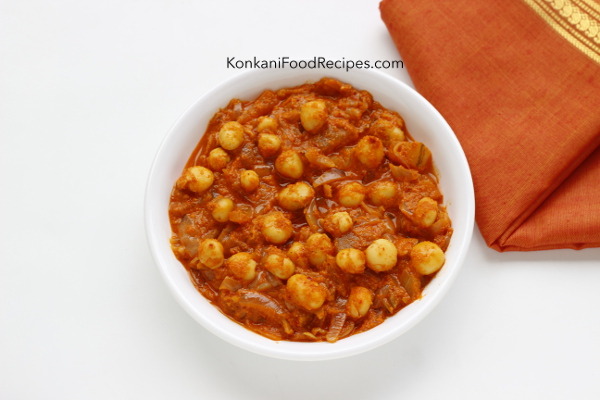
Well, can you think of that one dish that makes you feel like you've attained nirvana? That one dish that makes you feel you're half way across the world? When I think of it, the one dish that comes to my mind is 'alamba saung/song with udha polo' in Konkani. Essentially, that translates to a spicy, thunder mushroom side dish with lentil dosas.
Thunder mushrooms are a type of mushrooms that grow just below the ground, in the hilly areas, near the coastal regions of Udupi-Mangalore. These mushrooms are different from the regular mushrooms & they say they can't be cultivated. These mushrooms are totally round in shape and do not have any stem. These mushrooms grow only in the wild, amongst thick forests, amidst decomposing leaves. They rarely grow up to the size of a lemon and are tiny, round in shape. These mushrooms come in all shapes & sizes. They have an outer, soft or hard, thin or thick covering. And hence, are peeled to get the inner, edible, soft, white portion. The soft inner white part is then cooked to make yummy Konkani delicacies. They have a distinct taste on cooking, but for the most part are bland in taste. Hence, they're used to make spicy Konkani preparations like a spicy coconut curry with field marrow & onions, called as alamba ambat/randayi/gashi in Konkani. Or are used to make alamba sukke/bhutti, a spicy, coconut-based side dish. Or are used to make alamba sanna polo, spicy, tiny rice dosas for lunch, with these mushrooms in them.
These tiny mushrooms grow only during the start of monsoon each year. These mushrooms are called alamb in Konkani and are available only for a month and a half during the start of monsoon season every year. Hence, they are highly sought after by the Konkani community (folks who speak the dialect Konkani).
It is believed that these mushrooms grow in abundance when it thunders and lightens. Hence, these mushrooms are also called as gud gud alambe/alamb in Konkani. Alambe/alamb in Konkani means mushrooms and gud gudu means lighting in Konkani. Hence, the name, thunder mushrooms.
Peeling off these mushrooms is a tedious process. Removing the thin or thin, soft, sometimes hard outer shell requires time and patience. You need to use your nails or hard end of a spoon or a knife or something sharp to deshell them and in the process keep the inner, soft, edible portion intact & whole. They could easily break off or get crushed with little pressure applied. Keeping these mushrooms whole is the key to enjoying them later. And that is laborious. With joint families in earlier days, peeling off these mushrooms while it poured heavily outside was fun. All my family members would gather around to peel these tiny mushrooms.
These mushrooms once peeled, considerably reduce in quantity. They further reduce in quantity on cooking. Hence, if you want to cook for 2 of you, you would need at least a half a kg of these mushrooms. And peeling half a kg of these mushrooms should take anywhere between 30-60 minutes depending on your skill. :-) However, once cooked they taste absolutely amazing. So, it’s worth the effort. These mushrooms cook fast and they take only about 5-7 minutes to cook. While they're cooking they give out an odour which might be a little unpleasant to ones who are new to these mushrooms.
As these mushrooms are seasonal, they're highly sought after by the Konkani community. So, they're very expensive. But as always, Konkani’s don’t give a damn when they love eating something. :-) Just like the bibbo/tender cashews and anything else for that matter.
These thunder mushrooms are called by various local names - bhuyiphutil (it means emerged from the earth in Konkani), gud gud alambe (means thunder mushrooms in Konkani), kall alamb (means stone shaped mushrooms in Konkani). In Kannada they are called kall anabe (kallu means stone and anabe means mushroom in Kannada)
Alamba saung/song
Thunder mushrooms are cooked in a spicy, dry, coconut gravy to make alamba saung/song in Konkani. It is usually served as a side along with rice, dosas (udha polo, pan polo) or chapatis. This side dish is similar to Konkani cuisine's famous batate song.
Ingredients:
- 1 cup peeled thunder mushrooms (1/2 kg thunder mushrooms/alamb)
- 1 medium sized potato
- 2 medium sized onions thinly sliced
- 1 teaspoon of coriander seeds
- 2 tablespoons of grated coconut
- 5 dried red chillies
- 1 tablespoon/lemon sized tamarind
- 2 tablespoons of oil
- Salt to taste
Serves: 2
Preparation Time: 60 minutes
Preparation Method:
Prepping thunder mushrooms/gud gud alamb:
1. Give the thunder mushrooms a good wash and peel them all.
Freshly bought mushrooms, uncleaned mushrooms look like these:
In the picture below (clockwise) are freshly brought mushrooms, cleaned, washed mushrooms, peeled mushrooms (the edible, inner, soft part of the mushroom) and mushroom peels on the left are seen below.
2. Peeling the mushrooms: The hard or soft, thin, sometimes thick, outer skin is carefully removed without breaking the inner, soft, white, edible portion.
Use your nails or the back of a spoon or a knife or something sharp to deshell them and in the process keep the inner, soft, edible portion intact & whole. They could easily break off or get crushed with little pressure applied. Keeping these mushrooms whole is the key to enjoying them later.
The peel is thrown away & only the inner white edible part of mushroom is used in cooking.
Below are the outer sheels/peels & some with the edible white part in them.
Peeled, white, edible part:
Some of these mushrooms tend to get spoilt on the inside (the reason is unknown, aging, storing them for few days spoils them, cleaning them & storing, spoils them instantly. Cleaning removes their mycelium I guess. :) ). Mushrooms could be partly spoilt or completely spoilt, you know it by the change in colour of the inner, white, edible portion you get after peeling. The inner, pure white, edible portion changes to light brown or dark brown or black in colour. You could chop off those portions and use rest of the mushroom. But please do not use those mushrooms that are completely blackened/brown on the inside. The mushrooms might look good from the outside, but if the inner portion is completely brown or black, throw away such mushrooms.
Preparing the dish - alamba saung/song:
1. Cook peeled thunder mushrooms with one cup of water until they are cooked through. Drain all the water and keep them aside.
2. Pressure cook potatoes until they're soft, peel them and break them down into small pieces using your hand. Keep them aside.
You can cube the cooked, peeled potatoes but when they are roughly smashed with hand and are broken down into small pieces, they blend well with the masala and give the song a nice, thick consistency.
3. Peel and slice onions. Keep them aside.
4. Fry dried red chillies with few drops of oil for 2-3 minutes and remove them from heat. Let them cool down completely. We want to remove the raw taste dried red chillies otherwise impart to this dish.
5. Once cooled grind fried red chillies with coriander seeds, grated coconut and tamarind into a very smooth paste using only as much water as required. Keep the ground masala aside.
Coconut is added just for taste, potatoes give this dish a nice, thick consistency so, do not add excess coconut. It'll ruin the taste of song/saung.
6. Heat oil in a wok and add sliced onions to it. Add salt to fasten their cooking and saute the onions. Fry onions till they are translucent.
7. Once the onions are half cooked/translucent, add in cooked potatoes pieces, the ground masala, cooked thunder mushrooms and mix well. Check and adjust salt.
8. Add about 1/4 cup water if required to cook the onions and bring together all the ingredients. Do not add excess water, we need a semi thick to dry gravy in the end.
9. Cook on medium flame. Let it simmer for 5-8 minutes till the onions cook through completely and all the excess water evaporates. You can then remove it from heat.
Serving suggestions:
1. Serve alamba song/saung hot as a side dish with a bowl of hot, steaming rice, mix well and enjoy with or without loads of ghee on top.
2. Serve hot alamba song/saung with a bowl of steaming hot rice and dalithoy.
3. Serve alamba song/saung as a side dish with hot udha polo (split lentils dosa). Alamba song/saung goes amazingly well with udha polo.
4. Eat alamba song/saung with a bowl of curd rice and it tastes yummmm!
5. You can also eat this alamba song/saung with pan polo (neer dosa/rice crepes) or chapathis as a side dish.
Side note:
If you have lots of thunder mushrooms with you, then you can skip potatoes and not add it to this side dish. Potatoes gives a nice, thick consistency to this dry side dish. And potatoes compensates for thunder mushrooms when you have only a handful of them with you.
Find more Konkani cuisine side dishes here.
Tags: Konkani cuisine, Konkani food, Konkani recipe, Alambe, gud gud alambe, alamba bhuthi, alamba song, alamb, bhuyiphutil, kall alamb, kall anabe, Udupi cuisine, Mangalore food, alamb, alamba buthi, alamba sukke.
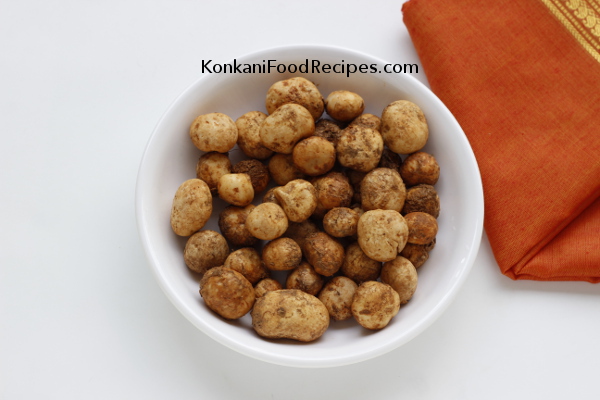



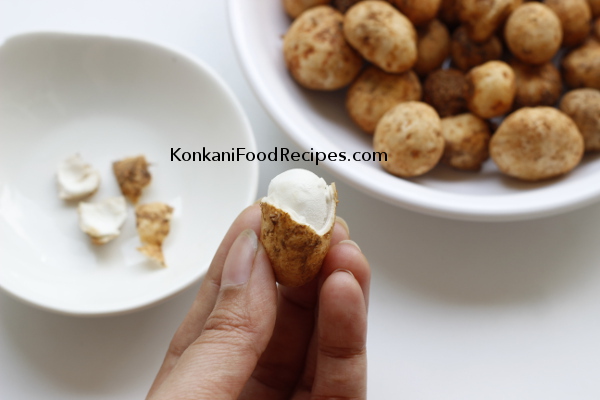
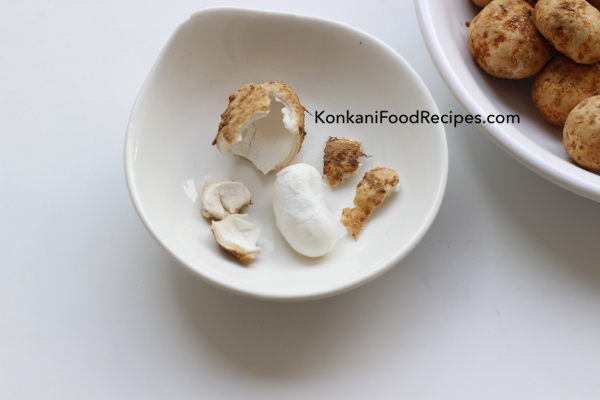




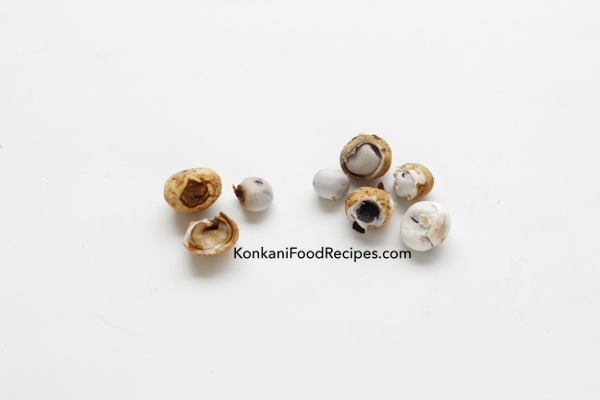
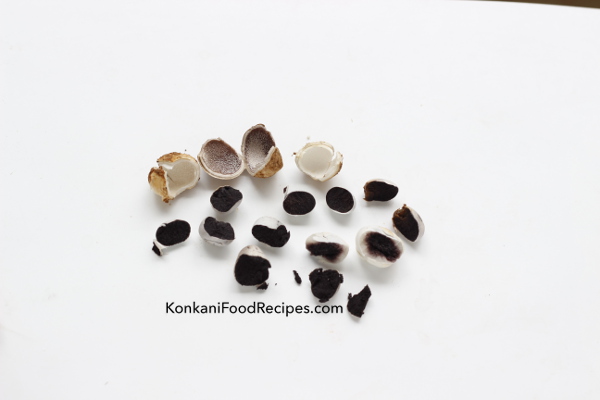
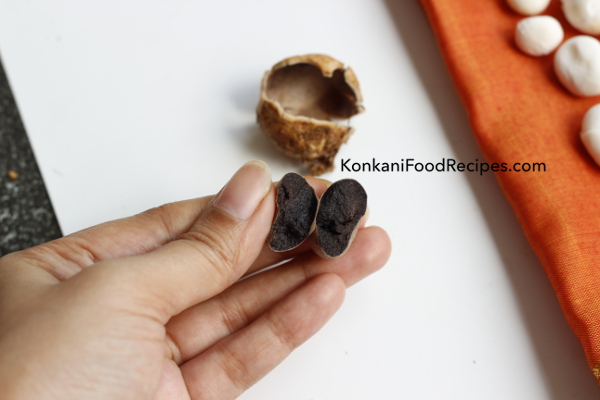

Tweet